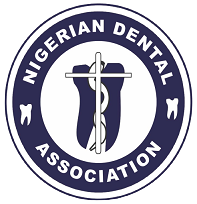Diagnosis and clinical management of teeth with vertical root fractures: a literature review
DOI:
https://doi.org/10.61172/ndj.v20i1.115Abstract
The diagnosis of vertical root fracture (VRF) is at times complicated for lack of specific signs, symptoms and/or radiographic features. It constitutes an important threat to the tooth’s prognosis during and after root canal therapy and may result in root or tooth extraction. Early detection and management of VRF remain a vexing issue that has caused needless stress for both the dentist and the patient. This paper presents an overview of the prevalence and multifactorial aetiology of VRF, the clinical and radiographic features of this disorder, the importance of correct diagnosis and treatment options available for both anterior and posterior teeth. An exhaustive review of literature was done using Medline to bring out various etiologic factors, clinical presentations, radiographic features and treatment alternatives available for VRF. There are, however, many specific clinical and radiological signs which when present, can alert clinicians to the existence of a fracture. Even though VRF are commoner in endodontically treated teeth, its occurrence in non-restored teeth has been described. Clinical signs and symptoms vary according to the position of the fracture, tooth type, duration after fracture, periodontal condition of the tooth and architecture of the bone adjacent to the fracture. The radiographic appearance of teeth with VRF is variable depending on the angulation of X-ray beam in relation to the plane of the fracture, the time after fracture and the degree of separation of the root fragments. It is important to recognize the sometimes subtle findings in VRF so that patient can be properly informed about the prognosis and the potential for successful treatment in affected tooth\teeth.
Downloads
Downloads
Published
Issue
Section
License
Copyright (c) 2012 I. M. Abiodun-Solanke, D. M. Ajayi

This work is licensed under a Creative Commons Attribution 4.0 International License.
Open Access Statement
- We became fully Open Access since January 2023.
- Our new and archived materials are available free of charge on open basis and under a Creative Commons license as stated below.
Copyright statement
Copyright © 1999 The authors. This work, Nigerian Dental Journal by Nigerian Dental Association is licensed under Creative Commons Attribution 4.0 International License.

